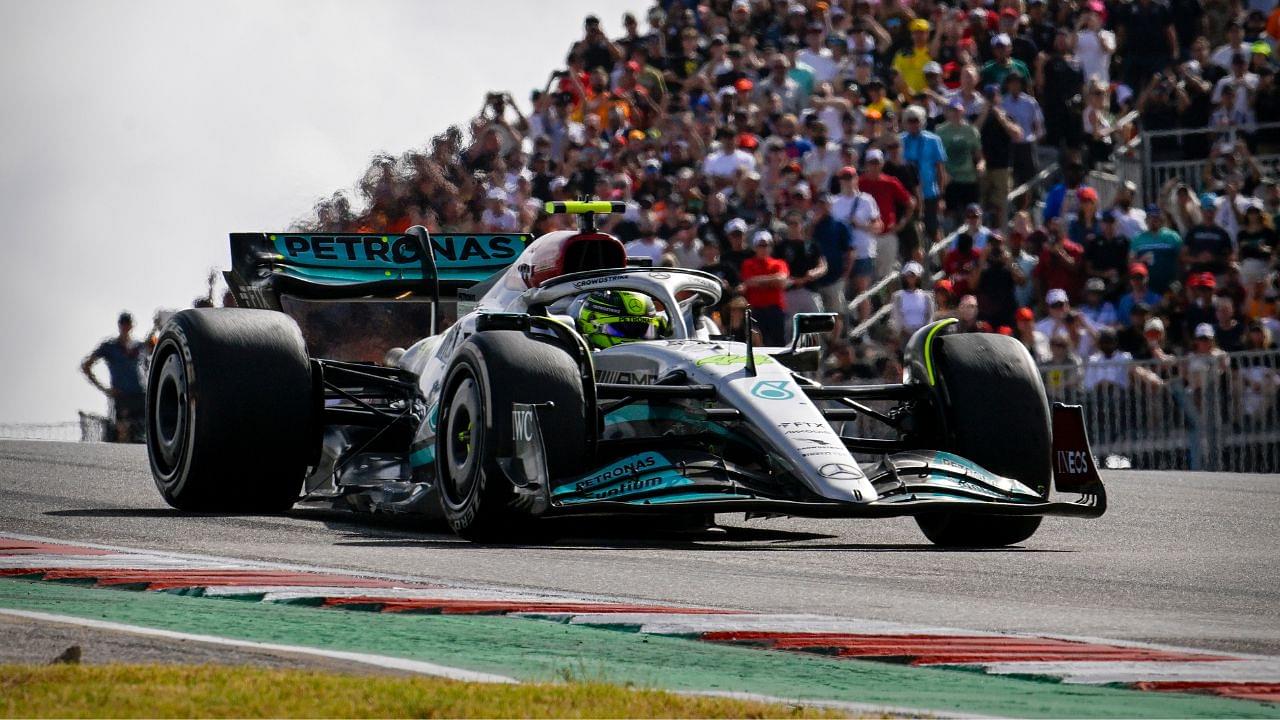As the pre-season testing kicks off, F1 teams will be all ready to show off their latest challengers. One would assume that the opportunity presented would be used to assert dominance and show off the hard work put in during the off-season. But this isn’t how it usually goes. Made popular by Mercedes- sandbagging has been a term thrown around regularly, and a concept used to its absolute fullest during the early days of a season.
The polar opposite of glory runs, sandbagging tactfully hides a car’s true power. Why would teams do that? If some sort of genius modification makes the car lap its rivals a second and a half faster, that would immediately raise suspicions. Another reason is to give the opposition a false sense of security and then take them by surprise when the season starts.
How does Sandbagging work in F1?
Sandbagging is when a team has their drivers go slower than expected during sessions, to hide the real pace of the car. Hiding a team or driver’s true performance is a common tactic used to deceive competitors, the media, and even fans about a team’s strengths. Going under the radar helps deflect attention away from a particular part or concept of the car.
Teams are constantly looking for a way to get the upper hand over their rivals and gain that extra edge. Sandbagging is just one of those tactics to deceive the public and their rivals, especially during the start of the season- in testing or early sessions. This is because teams are still developing their cars and working on setup configurations. If their competitors accurately gauge their performance early on, quick changes can be introduced to gain an advantage over the top teams.
This concept takes many forms. The most common way of playing the game of deception is to deliberately perform slower on test runs. This also helps save tires, fuel and avoids collisions. Further. pitstop strategies can simulate slower lap times as well- which would mean putting on the farce of tire degradation or fuel issues slowing them down. This helps create the impression that they aren’t as competitive, and then the focus shifts.
Also read: Porpoising F1: Are Formula 1 Cars Bouncing Excessively in 2023?
Sandbagging is also used to create a false sense of security among competitors. By intentionally underperforming, race day comes as a shock to everyone, like throwing a spanner in the works of their rivals. Mercedes in 2019 is a prime example of this; practically giving up the championship to Ferrari in testing, only to win the first eight races of the season.
However, F1 has been trying to introduce various measures to discourage this. Limiting the number of engine parts a team can use and mandating tire compounds for specific races are all an attempt to limit sandbagging. These measures should reduce the number of variables a team can manipulate to their advantage and hence, deceive their rivals.
Mercedes’ history with sandbagging
In 2017, Ferrari was the star of the show during pre-season testing. Kimi Raikkonen was a solid 1.3 seconds faster than Valtteri Bottas. Lewis Hamilton spoke to the media about how Ferrari was the fastest car on the grid, with more pace than what they showed. In round 1 of the season, the bubble burst. Hamilton qualified on pole and almost had the race win in hand. Ferrari wasn’t far off the pace during the season, but they weren’t close to what Mercedes had propagated. Ultimately, Hamilton and Mercedes enjoyed the championship celebrations.
83 laps for LH to end day one in Bahrain. 👊 pic.twitter.com/4c9nEKAMvS
— Mercedes-AMG PETRONAS F1 Team (@MercedesAMGF1) February 23, 2023
A similar storyline repeated itself in 2018. Sebastian Vettel put Ferrari on top of the time sheets while Mercedes pulled out their playbook. Setting their fastest times on hard tires, the timesheets put the team 7th on the grid. A gross underselling of what was to come, Hamilton out-qualified the duo in Red by seven-tenths of a second, showing the true monstrosity of the W09; once again, both trophies were theirs to claim.
In 2019, Sebastian Vettel & Charles Leclerc made the Prancing Horses look frightening. Ferrari’s pace was unmatched as once again, Mercedes claimed to be half a second off the pace with no hopes of beating the dynamic duo. But, hold your horses. Hamilton and Bottas locked out the front row in Australia, with the Finn taking the checkered flag 20 seconds ahead of the rest of the grid. Championships aside, the Brackley outfit took 1-2s in the first five races of the season- an F1 record.
Remember when everyone thought Mercedes was sandbagging in testing last year? #F1Testingpic.twitter.com/yEaouRE7HI
— Stefanie (@fastpitstop) February 23, 2023
Having established their sandbagging tactics, 2020 didn’t require any deceit, as Mercedes was undoubtedly the most powerful on the grid. DAS-equipped, the W11 was unlike anything the world had seen, and this time they weren’t afraid to flaunt it. This monstrous juggernaut is by far the fastest car the sport had witnessed.
2021 was the year of the Bulls. Red Bull took the grid by storm- having finally developed a car that would take them to the top of the league. Thus proving to be worthy rivals to the men in black.
also read: What Is the ‘Green Paint’ on the F1 Cars?: The Use of ‘Flow Visualisation Paint’ During Testing
2022, however, was the year Mercedes cried wolf. Genuinely thrown off by the regulation change, the team struggled during both testing sessions and even in the early stages of the season. Far from the podium with a bouncy car, everyone refused to fall for their game again. However, halfway through the season, reality hit hard; the mighty had fallen and how.
Regardless, sandbagging isn’t exclusive to Mercedes, as many teams have followed suit with this sly game plan. With another season on its way, who will be the biggest surprise?







